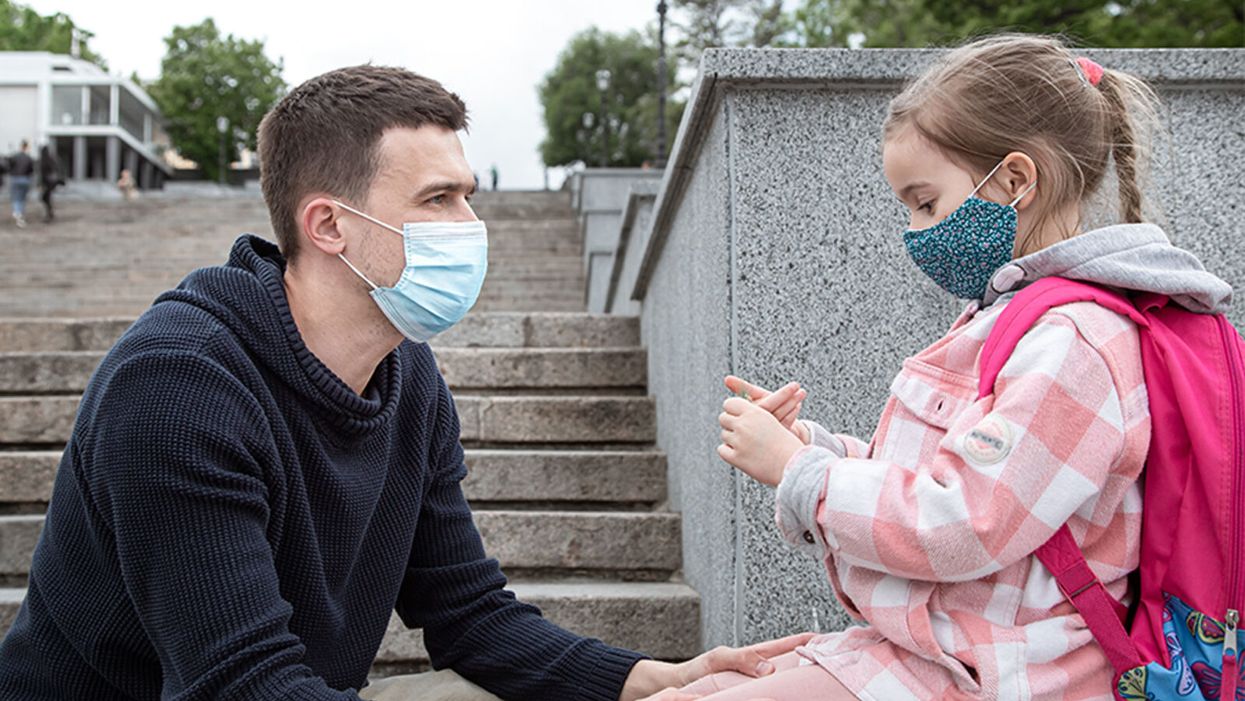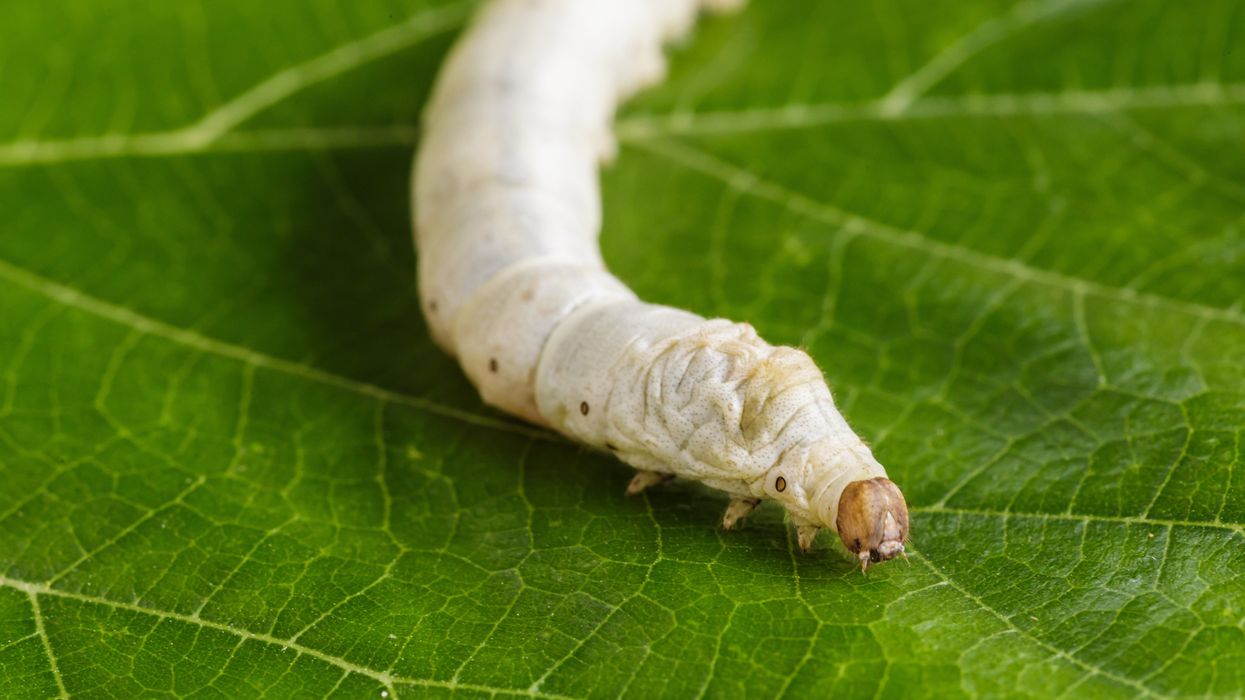5 Key Questions to Consider Before Sending Your Child Back to School

Consider community, school district policies, family health, risks/benefits, and necessity of schools before making the difficult decision.
[Editor's Note: This essay is in response to our current Big Question, which we posed to several experts: "Under what circumstances would you send a child back to school, given that the virus is not going away anytime soon?"]
It is August. The start date of school is quickly approaching. Decisions must be made about whether to send our children back. As a physician, a public health researcher, and the mother of two school-aged children, I have few clear answers.
To add insult to injury, a spate of recent new data suggests that - as many of us suspected all along - kids are susceptible to COVID-19, they transmit COVID-19, and they can get really sick from COVID-19.
Let me start with the obvious. My kids, and all kids, deserve a safe, in-person school year. We know the data on the adverse effects of school closure on kids, particularly for those who are already vulnerable. I also know, on a personal level, that distance learning is no substitute for in-person schooling. Homeschooling may be great for those with the privilege to do it, but I - like many Americans - am unable to quit my job, and children need more than a screen to learn.
Moreover, safe school reopening should not be an impossible dream. I and many other physicians, teachers, and scientists have described the bare minimum that we need to safely reopen schools: a stable, low rate of COVID-19 in the community; funding and mandates for basic public health precautions (like universal masking and small, stable classes) in the schools; and easy access to testing for kids and teachers. This has been achieved, successfully, in other countries.
Unfortunately, the United States has squandered its opportunity to do right by families. Across our country, rates of COVID-19 are rising. Few states have been able to sustain a test positivity rate of less than 5 percent - the maximum that most of us, in the public health world, would tolerate. Delays in testing are rampant. Systemic under-funding of public schools means that many schools simply can't afford to put basic public health measures in place. Worst, science denialism (and the spread of quack conspiracy theories online) means that many communities are fighting even the most basic of safety precautions.
To add insult to injury, a spate of recent new data suggests that - as many of us suspected all along - kids are susceptible to COVID-19, they transmit COVID-19, and they can get really sick from COVID-19. This data increases the risk calculus. Our kids are not immune, and neither are we.
Given that the necessary societal interventions simply have not happened, most American families are therefore left making an individual choice: do I send my kid to school? Or not? There are five key questions for parents to ponder when making the difficult choice about what to do.
First, we must look at our community. Knowing that testing is difficult to obtain, a true estimate of community prevalence of COVID-19 is nearly impossible. But with a test positivity rate of more than 5 percent, it's safe to assume that in a school of 500 people, at least 1 will be positive for COVID-19. That is too high for safety. Whether or not the local government does the right thing, I would not send my child to in-person school if my community had these high rates of test positivity.
Second, we must look at our school district's policies. Will the school mandate masks? Are they cohorting students and teachers in small, stable groups? Do they have contact tracing and isolation policies in place for when a student or teacher inevitably tests positive? Do they have procedures to protect vulnerable teachers and staff? If not, I would not send my child to school. If the district is doing all of the above, I would consider it.
Third, we must look at the health profile of our own kids and families. If my child had chronic medical issues, or if I lived with my elderly parents or were myself at high risk of severe disease, I would not send my child to in-person school.
It is therefore unlikely that schools anywhere in the U.S. will be open by October.
Fourth, we must do the difficult, ethical weighing of the non-zero risk of infection (even in the safest communities) with the needs of our children. Even in low-prevalence states, there will be infections in the school setting. That said, the small risk of a severe infection may be outweighed by the social, emotional, and financial risk of keeping a child home. This decision must be made on a family-by-family basis. I know my answer; but I cannot provide this answer for others.
Finally, we must call attention to the fact that many kids and families have no options. There are far too many American children who literally depend on their school system for physical, nutritional, emotional, and academic safety. There are too many parents who have no way to earn an income and keep their kids safe without in-person learning. If anyone deserves to be prioritized for in-person schooling, it should be them. (And yes, we should also work to fix the social safety net that leaves these children high and dry.)
As I write this on August 2nd, 2020, I am planning to send my two children back to our public schools for in-person education. We have low rates of infection in our community, we have masking and stable cohorts in place, and my family is relatively healthy. We also depend on the schools to keep my children safe and engaged while I'm working in the ER! I will not hesitate, however, to pull my children out of school should any of these considerations change, if local test positivity rates go up, or if my children report that masking is not the norm in the classroom.
And sadly, I expect that this discussion will soon be a moot point. We continue to fail as a nation at basic public health policies. It is therefore unlikely that schools anywhere in the U.S. will be open by October. Our country has not shown the willpower to control the virus, leaving us all with, literally, no choice to make.
[Editor's Note: Here's the other essay in the Back to School series: Masks and Distancing Won't Be Enough to Prevent School Outbreaks, Latest Science Suggests.]
Fast for Longevity, with Less Hunger, with Dr. Valter Longo
Valter Longo, a biogerontologist at USC, and centenarian Rocco Longo (no relation) appear together in Italy in 2021. The elder Longo is from a part of Italy where people have fasted regularly and are enjoying long lifespans.
You’ve probably heard about intermittent fasting, where you don’t eat for about 16 hours each day and limit the window where you’re taking in food to the remaining eight hours.
But there’s another type of fasting, called a fasting-mimicking diet, with studies pointing to important benefits. For today’s podcast episode, I chatted with Dr. Valter Longo, a biogerontologist at the University of Southern California, about all kinds of fasting, and particularly the fasting-mimicking diet, which minimizes hunger as much as possible. Going without food for a period of time is an example of good stress: challenges that work at the cellular level to boost health and longevity.
Listen on Apple | Listen on Spotify | Listen on Stitcher | Listen on Amazon | Listen on Google
If you’ve ever spent more than a few minutes looking into fasting, you’ve almost certainly come upon Dr. Longo's name. He is the author of the bestselling book, The Longevity Diet, and the best known researcher of fasting-mimicking diets.
With intermittent fasting, your body might begin to switch up its fuel type. It's usually running on carbs you get from food, which gets turned into glucose, but without food, your liver starts making something called ketones, which are molecules that may benefit the body in a number of ways.
With the fasting-mimicking diet, you go for several days eating only types of food that, in a way, keep themselves secret from your body. So at the level of your cells, the body still thinks that it’s fasting. This is the best of both worlds – you’re not completely starving because you do take in some food, and you’re getting the boosts to health that come with letting a fast run longer than intermittent fasting. In this episode, Dr. Longo talks about the growing number of studies showing why this could be very advantageous for health, as long as you undertake the diet no more than a few times per year.
Dr. Longo is the director of the Longevity Institute at USC’s Leonard Davis School of Gerontology, and the director of the Longevity and Cancer program at the IFOM Institute of Molecular Oncology in Milan. In addition, he's the founder and president of the Create Cures Foundation in L.A., which focuses on nutrition for the prevention and treatment of major chronic illnesses. In 2016, he received the Glenn Award for Research on Aging for the discovery of genes and dietary interventions that regulate aging and prevent diseases. Dr. Longo received his PhD in biochemistry from UCLA and completed his postdoc in the neurobiology of aging and Alzheimer’s at USC.
Show links:
Create Cures Foundation, founded by Dr. Longo: www.createcures.org
Dr. Longo's Facebook: https://www.facebook.com/profvalterlongo/
Dr. Longo's Instagram: https://www.instagram.com/prof_valterlongo/
Dr. Longo's book: The Longevity Diet
The USC Longevity Institute: https://gero.usc.edu/longevity-institute/
Dr. Longo's research on nutrition, longevity and disease: https://pubmed.ncbi.nlm.nih.gov/35487190/
Dr. Longo's research on fasting mimicking diet and cancer: https://pubmed.ncbi.nlm.nih.gov/34707136/
Full list of Dr. Longo's studies: https://pubmed.ncbi.nlm.nih.gov/?term=Longo%2C+Valter%5BAuthor%5D&sort=date
Research on MCT oil and Alzheimer's: https://alz-journals.onlinelibrary.wiley.com/doi/f...
Keto Mojo device for measuring ketones
Silkworms with spider DNA spin silk stronger than Kevlar
Silkworm silk is fragile, which limits its uses, but a few extra genes can help.
Story by Freethink
The study and copying of nature’s models, systems, or elements to address complex human challenges is known as “biomimetics.” Five hundred years ago, an elderly Italian polymath spent months looking at the soaring flight of birds. The result was Leonardo da Vinci’s biomimetic Codex on the Flight of Birds, one of the foundational texts in the science of aerodynamics. It’s the science that elevated the Wright Brothers and has yet to peak.
Today, biomimetics is everywhere. Shark-inspired swimming trunks, gecko-inspired adhesives, and lotus-inspired water-repellents are all taken from observing the natural world. After millions of years of evolution, nature has quite a few tricks up its sleeve. They are tricks we can learn from. And now, thanks to some spider DNA and clever genetic engineering, we have another one to add to the list.
The elusive spider silk
We’ve known for a long time that spider silk is remarkable, in ways that synthetic fibers can’t emulate. Nylon is incredibly strong (it can support a lot of force), and Kevlar is incredibly tough (it can absorb a lot of force). But neither is both strong and tough. In all artificial polymeric fibers, strength and toughness are mutually exclusive, and so we pick the material best for the job and make do.
Spider silk, a natural polymeric fiber, breaks this rule. It is somehow both strong and tough. No surprise, then, that spider silk is a source of much study.The problem, though, is that spiders are incredibly hard to cultivate — let alone farm. If you put them together, they will attack and kill each other until only one or a few survive. If you put 100 spiders in an enclosed space, they will go about an aggressive, arachnocidal Hunger Games. You need to give each its own space and boundaries, and a spider hotel is hard and costly. Silkworms, on the other hand, are peaceful and productive. They’ll hang around all day to make the silk that has been used in textiles for centuries. But silkworm silk is fragile. It has very limited use.
The elusive – and lucrative – trick, then, would be to genetically engineer a silkworm to produce spider-quality silk. So far, efforts have been fruitless. That is, until now.
We can have silkworms creating silk six times as tough as Kevlar and ten times as strong as nylon.
Spider-silkworms
Junpeng Mi and his colleagues working at Donghua University, China, used CRISPR gene-editing technology to recode the silk-creating properties of a silkworm. First, they took genes from Araneus ventricosus, an East Asian orb-weaving spider known for its strong silk. Then they placed these complex genes – genes that involve more than 100 amino acids – into silkworm egg cells. (This description fails to capture how time-consuming, technical, and laborious this was; it’s a procedure that requires hundreds of thousands of microinjections.)
This had all been done before, and this had failed before. Where Mi and his team succeeded was using a concept called “localization.” Localization involves narrowing in on a very specific location in a genome. For this experiment, the team from Donghua University developed a “minimal basic structure model” of silkworm silk, which guided the genetic modifications. They wanted to make sure they had the exactly right transgenic spider silk proteins. Mi said that combining localization with this basic structure model “represents a significant departure from previous research.” And, judging only from the results, he might be right. Their “fibers exhibited impressive tensile strength (1,299 MPa) and toughness (319 MJ/m3), surpassing Kevlar’s toughness 6-fold.”
A world of super-materials
Mi’s research represents the bursting of a barrier. It opens up hugely important avenues for future biomimetic materials. As Mi puts it, “This groundbreaking achievement effectively resolves the scientific, technical, and engineering challenges that have hindered the commercialization of spider silk, positioning it as a viable alternative to commercially synthesized fibers like nylon and contributing to the advancement of ecological civilization.”
Around 60 percent of our clothing is made from synthetic fibers like nylon, polyester, and acrylic. These plastics are useful, but often bad for the environment. They shed into our waterways and sometimes damage wildlife. The production of these fibers is a source of greenhouse gas emissions. Now, we have a “sustainable, eco-friendly high-strength and ultra-tough alternative.” We can have silkworms creating silk six times as tough as Kevlar and ten times as strong as nylon.
We shouldn’t get carried away. This isn’t going to transform the textiles industry overnight. Gene-edited silkworms are still only going to produce a comparatively small amount of silk – even if farmed in the millions. But, as Mi himself concedes, this is only the beginning. If Mi’s localization and structure-model techniques are as remarkable as they seem, then this opens up the door to a great many supermaterials.
Nature continues to inspire. We had the bird, the gecko, and the shark. Now we have the spider-silkworm. What new secrets will we unravel in the future? And in what exciting ways will it change the world?
This article originally appeared on Freethink, home of the brightest minds and biggest ideas of all time.


